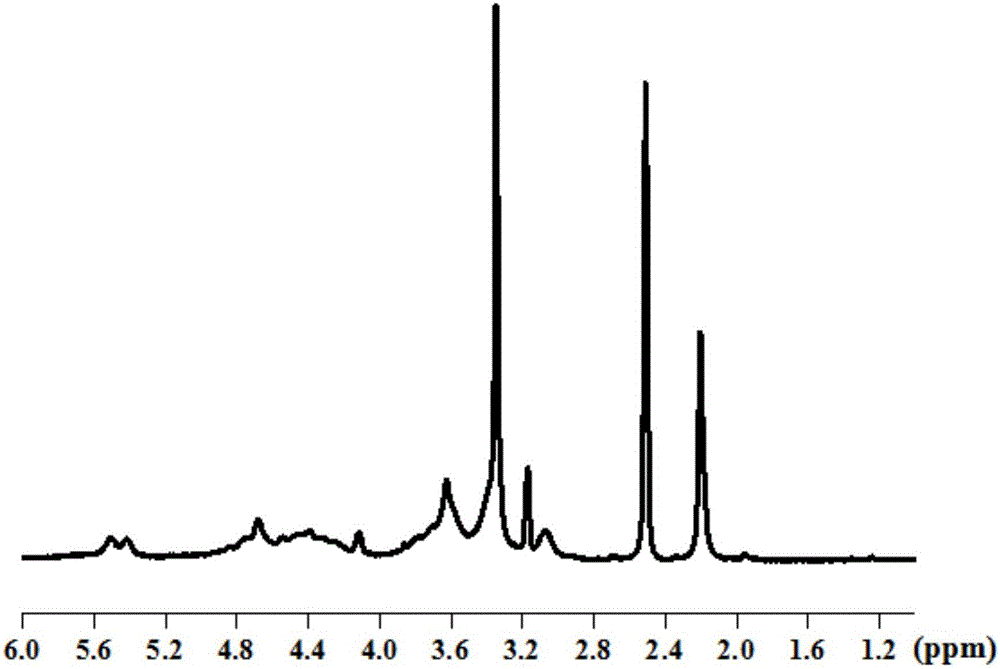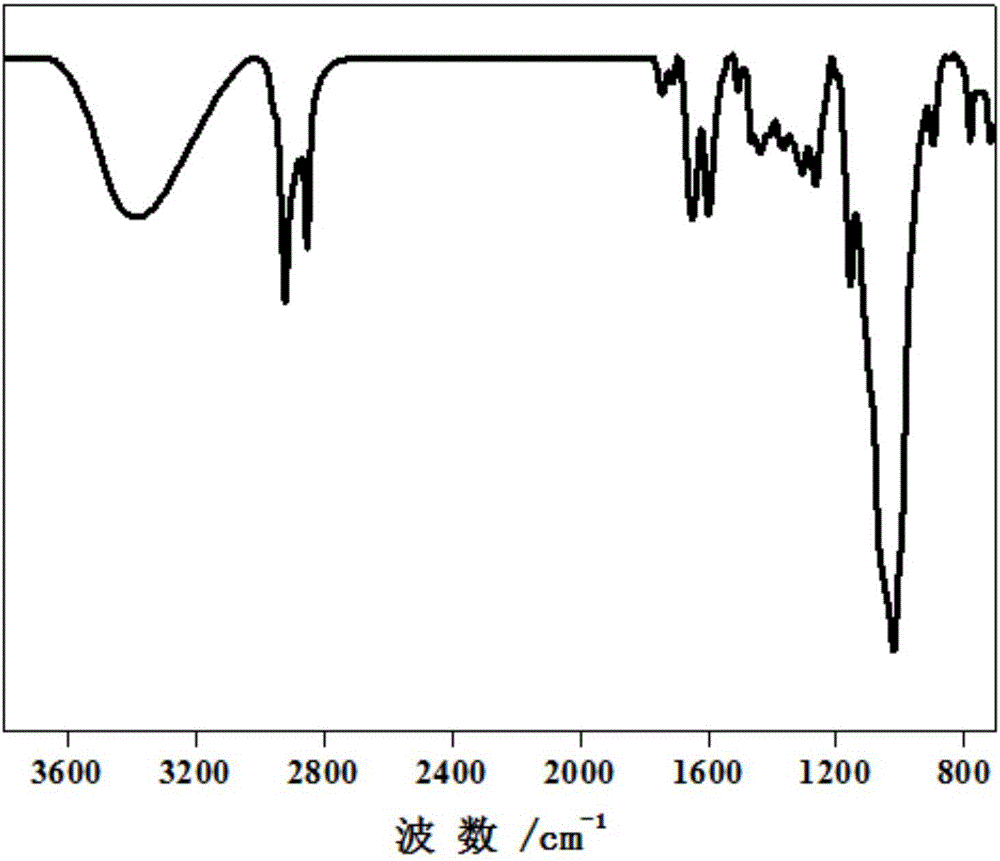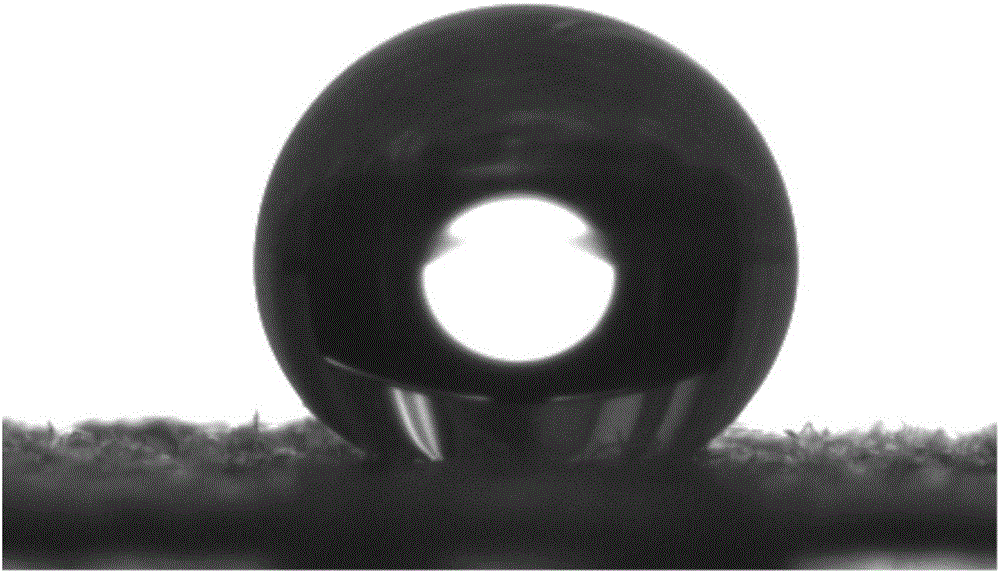Cotton fabric durable hydrophobic finishing method
A cotton fabric, durable technology, applied in fiber processing, plant fiber, textiles and papermaking, etc., can solve the problems of unfriendly production conditions, long production cycle, poor durability, etc. simple effect
- Summary
- Abstract
- Description
- Claims
- Application Information
AI Technical Summary
Problems solved by technology
Method used
Image
Examples
Embodiment 1
[0031] Step 1: padding cellulose acetoacetate aqueous solution: wash the ordinary cotton fabric with deionized water and ethanol in turn to remove the dirt attached to the cotton fabric, and wash the clean cotton fabric with a concentration of 5 mg / mL cellulose acetoacetate One-dipping and one-rolling finishing in the ester aqueous solution, the rolling rate is 80%, and then pre-baked at 60°C for 3 minutes.
[0032] Step 2: Ethanol dispersion of low surface energy compounds, crosslinking agents and nanoparticles by padding: Cotton fabrics pretreated with cellulose acetoacetate were treated with stearyl primary amine, aminosilane coupling at a concentration of 100 mg / mL. The combination agent KH550 and silicon dioxide nanoparticles (about 40nm in particle size) in the ethanol dispersion are subjected to one-dipping and one-rolling finishing, and the spare rate is 80%. Octadecyl primary amine accounted for 3% of the mass fraction of the dispersion, aminosilane coupling agent KH5...
Embodiment 2
[0038] Step 1: padding cellulose acetoacetate aqueous solution: wash the ordinary cotton fabric with deionized water and ethanol in turn to remove the dirt attached to the cotton fabric, and wash the clean cotton fabric with a concentration of 5 mg / mL cellulose acetoacetate One-dipping and one-rolling finishing in the ester aqueous solution, the rolling rate is 80%, and then pre-baked at 60°C for 3 minutes.
[0039]Step 2: Ethanol dispersion of low surface energy compounds, cross-linking agents and nanoparticles by padding: Cotton fabrics pretreated with cellulose acetoacetate were treated with stearyl primary amine, aminosilane coupling at a concentration of 150 mg / mL. The combination agent KH550 and silicon dioxide nanoparticles (about 40nm in particle size) in the ethanol dispersion are subjected to one-dipping and one-rolling finishing, and the spare rate is 80%. The long-chain alkyl primary amine accounts for 3% of the mass fraction of the dispersion, the aminosilane coup...
Embodiment 3
[0042] Step 1: padding cellulose acetoacetate aqueous solution: wash the ordinary cotton fabric with deionized water and ethanol in turn to remove the dirt attached to the cotton fabric, and clean the cotton fabric with a concentration of 5 mg / mL cellulose acetoacetate One-dipping and one-rolling finishing in the ester aqueous solution, the rolling rate is 80%, and then pre-baked at 60°C for 3 minutes.
[0043] Step 2: Ethanol dispersion of low surface energy compounds, cross-linking agents and nanoparticles by padding: Cotton fabrics pretreated with cellulose acetoacetate were treated with stearyl primary amine, aminosilane coupling at a concentration of 150 mg / mL. The combination agent KH550 and the ethanol dispersion of silicon dioxide nanoparticles (about 450nm in particle size) are subjected to one-dipping and one-rolling finishing, and the spare rate is 80%. The long-chain alkyl primary amine accounts for 3% of the mass fraction of the dispersion, the aminosilane couplin...
PUM
| Property | Measurement | Unit |
|---|---|---|
| Concentration | aaaaa | aaaaa |
| Concentration | aaaaa | aaaaa |
| Particle size | aaaaa | aaaaa |
Abstract
Description
Claims
Application Information
 Login to view more
Login to view more - R&D Engineer
- R&D Manager
- IP Professional
- Industry Leading Data Capabilities
- Powerful AI technology
- Patent DNA Extraction
Browse by: Latest US Patents, China's latest patents, Technical Efficacy Thesaurus, Application Domain, Technology Topic.
© 2024 PatSnap. All rights reserved.Legal|Privacy policy|Modern Slavery Act Transparency Statement|Sitemap



